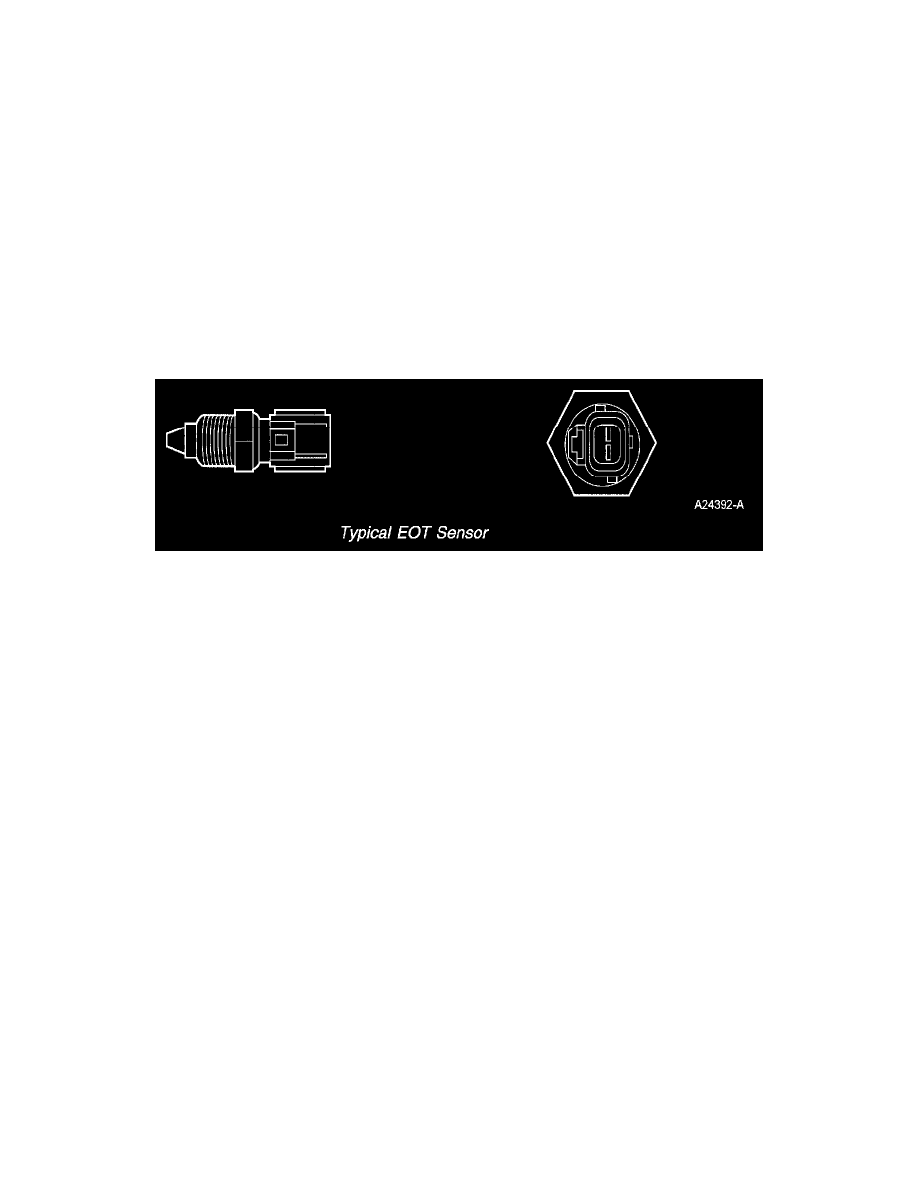Grand Marquis V8-4.6L Flex Fuel (2010)

Oil Temperature Sensor/Switch: Description and Operation
ENGINE CONTROL COMPONENTS
Engine Oil Temperature (EOT) Sensor
The EOT sensor is a thermistor device in which resistance changes with temperature. The electrical resistance of a thermistor decreases as the
temperature increases and the resistance increases as the temperature decreases. The varying resistance changes the voltage drop across the sensor
terminals and provides electrical signals to the PCM corresponding to temperature.
Thermistor-type sensors are considered passive sensors. A passive sensor is connected to a voltage divider network so that varying the resistance of
the passive sensor causes a variation in total current flow. Voltage that is dropped across a fixed resistor in series with the sensor resistor determines
the voltage signal at the PCM. This voltage signal is equal to the reference voltage minus the voltage drop across the fixed resistor.
The EOT sensor measures the temperature of the engine oil. The sensor is typically threaded into the engine oil lubrication system. The PCM uses the
EOT sensor input in conjunction with other PCM inputs to determine oil degradation.
The PCM uses EOT sensor input to initiate a soft engine shutdown to prevent engine damage from occurring as a result of high oil temperatures.
Whenever engine RPM exceeds a calibrated level for a certain period of time, the PCM begins reducing power by disabling engine cylinders.
On VCT applications, the PCM uses the EOT sensor input to adjust the VCT control gains and logic for camshaft timing.
Typical EOT Sensor
